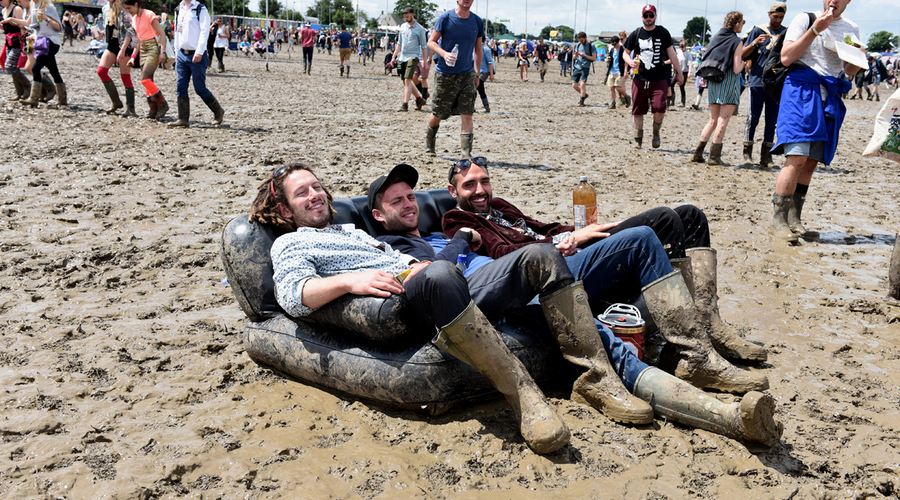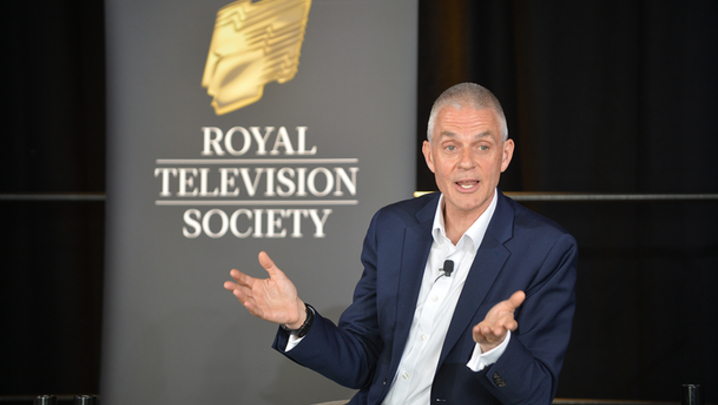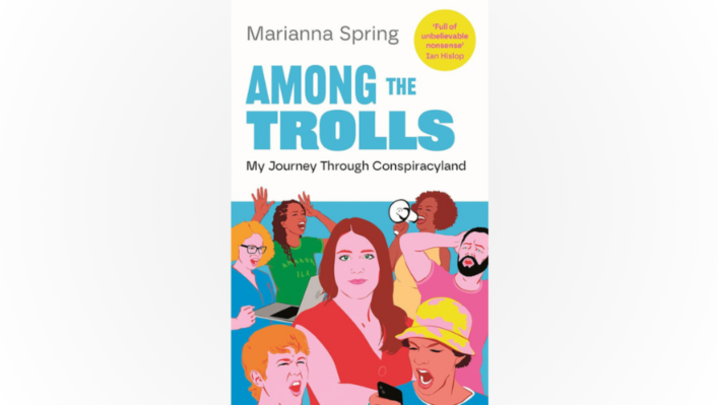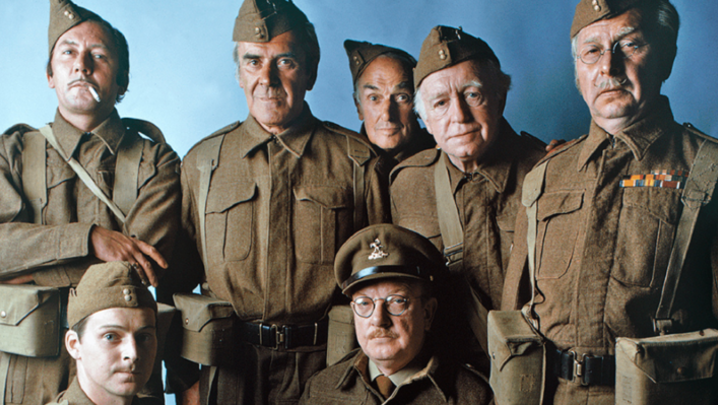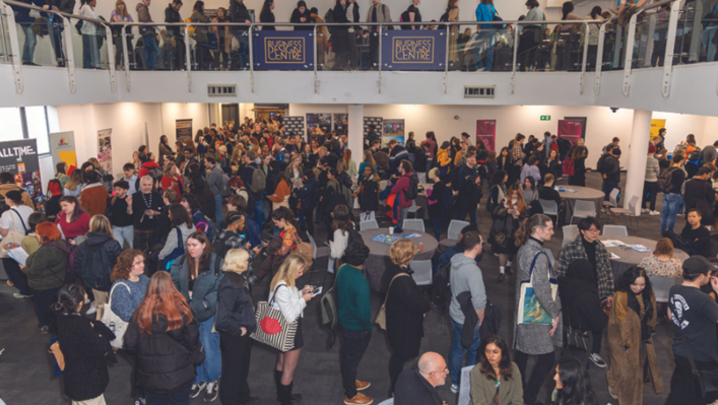Glastonbury is back after a three-year absence. Shilpa Ganatra finds out how the BBC plans to cover the UK’s biggest music festival.
The phrase “go big or go home” could have been coined for the Glastonbury Festival. There are two ways to experience the world’s most important music weekender: those with the stamina and luck in the ticket lottery can camp out at Worthy Farm, mud and all; or there’s a viable “home” option, with the BBC, a cuppa and biscuits.
Since the BBC gained the rights to Glasto for its 1997 edition, the capacity of the festival has doubled, but the TV coverage and viewership has increased exponentially. That’s particularly the case since the BBC gained distribution rights in 2010 – it is now beamed to around 100 territories across the globe.
James Hall, a freelance journalist who covers Glastonbury for The Daily Telegraph, has been attending since 1992. “That was during the time of Channel 4’s 4 Goes To Glastonbury and, even then, I was protective of our little secret getting out,” he says.
“Since then, the BBC has been instrumental in taking the festival mainstream. Now, you go on an aeroplane and you can watch a Coldplay set from Glastonbury – it really has turned into something else.”
Viewers have seen Radiohead at the top of their game in 1997, witnessed the legendary headline set from David Bowie in 2000, and watched as Jay-Z redefined the remit of Glastonbury in 2008, as did Beyoncé in 2011. The last Glasto in 2019 saw Kylie’s “Legends” slot reap 3.2 million viewers – the festival’s highest ratings yet – “and higher than for EastEnders”, notes Hall.
“It’s a win-win for Glastonbury, the BBC and for the artists,” he suggests. “It allows Glastonbury to attract the best line-ups, especially as the artists’ fees are small compared with other festivals. The fee doesn’t cover the production costs, so the bells and whistles have to be paid for out of the artists’ own budgets – rumour has it that Stormzy’s pyros cost £16,000 a burst. But they’re willing to do this because they know it’s going to be watched by hundreds of thousands of people.
“It works for everyone, except rival festivals, who say it creates a licence-fee subsided event. Other festivals don’t have that exposure in their toolkit, and have to pay more for their artists.”
Still, after Glastonbury’s pandemic related absence, it returns this year at the end of this month with Billie Eilish, Paul McCartney and Kendrick Lamar headlining. The corresponding coverage promises to “be bigger in scale and range than ever before”, says the BBC’s director of music, Lorna Clarke.

Alison Howe, executive producer for BBC Studios, adds: “We’ve had the biggest enforced break any of us have ever had. So, there’s a real sense of doing everything we can within our power and our budgets to go as big as we can.”
Ahead of the weekend itself, BBC Two documentary Glastonbury: 50 Years and Counting will chart its social and musical history, while another doc will go behind the scenes of Stormzy’s powerful headline performance in 2019.
Once the festival site opens, coverage will run across all four linear channels for the first time (and last time, as BBC Four will soon be online-only), alongside expanded iPlayer coverage. Clara Amfo, Jo Whiley and Lauren Laverne return as core presenters of the TV coverage, this year joined by Radio 1’s Jack Saunders. “His energy levels are immense, which is pretty important at Glastonbury, particularly at 1:00am,” says Howe.
This year also sees BBC Studios’ Glastonbury HQ move to Cardiff. “We’ve always worked with some of our colleagues in BBC Studios in Cardiff, because there’s lots of people there that know and love Glastonbury, but we’ve formalised it for this year’s event,” says Howe.
Technical improvements are only to be expected after a two-year hiatus, and the main change for 2022 is upgrading to ultra-high-definition TV (UHD) for much of the Pyramid Stage coverage. Mostly trialled in sport events, it will be the first time that UHD is used in a major music event, with specific benefits for this audience. “The stage coverage will look glossier as a result and the cameras will allow us to show the night-time audience better,” says Peter Taylor, BBC Studios’ head of operations.
“In the daytime, you look up the hill [towards] the big stages and you can really see that scale of the 80,000-strong crowd. By the time it’s the headline act, they’re all standing in the dark, and you lose a bit of that atmosphere. With the cameras that we’re using, I think we’ll be able to get further and see that crowd.
“We’ve got this technology and it’s clever stuff,” he continues. “But it’s only when we get it into the hands of the creative people like our directors and producers that we discover what it enables us to show. And that will build. That’s the trajectory we’re on, and we’re taking it to the next stage.”
Preparations begin for the festival at the start of the year. “We start going down in in January, when the cows are all out in the woods,” says Taylor. “It transforms into a place where you can put on these massive stage shows with huge lighting operations, huge pyrotechnics and lasers… and those have just grown and grown.
“Over the years, the challenge has been to find new ways of shooting it when, ultimately, we’re still constrained by where we can put cameras because there are thousands of people there.”
The stage crews arrive in earnest on the Tuesday of festival week, divided into three presenting teams, a VT team, and a 25-strong team for each of the five stages that are live-streamed.
When it comes to show time, “Glastonbury is a site like no other, because if you try and plan something down to the second, you will fall over”, says Taylor. “We know things take roughly this length of time and they need to happen in this sort of sequence.”
Then it’s about dealing with the unexpected (“usually weather-related”, says Howe) and changing narratives as the festival progresses. That often calls for large-scale changes with little notice.
It’s difficult to think of more intense, demanding conditions in which to create such voluminous multichannel output. But that means Glasto provides world-class training for those up for the challenge. “It relies on people volunteering to do it. If you’re not a person that enjoys being at Glastonbury, Glastonbury is not the place for you to be,” says Taylor. “With all due respect to other colleagues, if they want to go and sit in the dry, they can go to Wimbledon that summer.”
“It can be a gruelling place, there’s no question,” agrees Howe. “But equally, I have been inundated with people who, though they’ve got lots of other jobs, have already earmarked days off in case there might be a job for them at Glastonbury.
“At the end of it you’re exhausted, but you feel like you’ve just done a year’s work. And, as professionals, a lot of people love that.
“Whether you’re a runner and it’s the maddest thing you’ve ever done, or you’ve done as many as I have, it’s still a shared unique experience.”
Glastonbury 2022 runs from 22 to 26 June.

